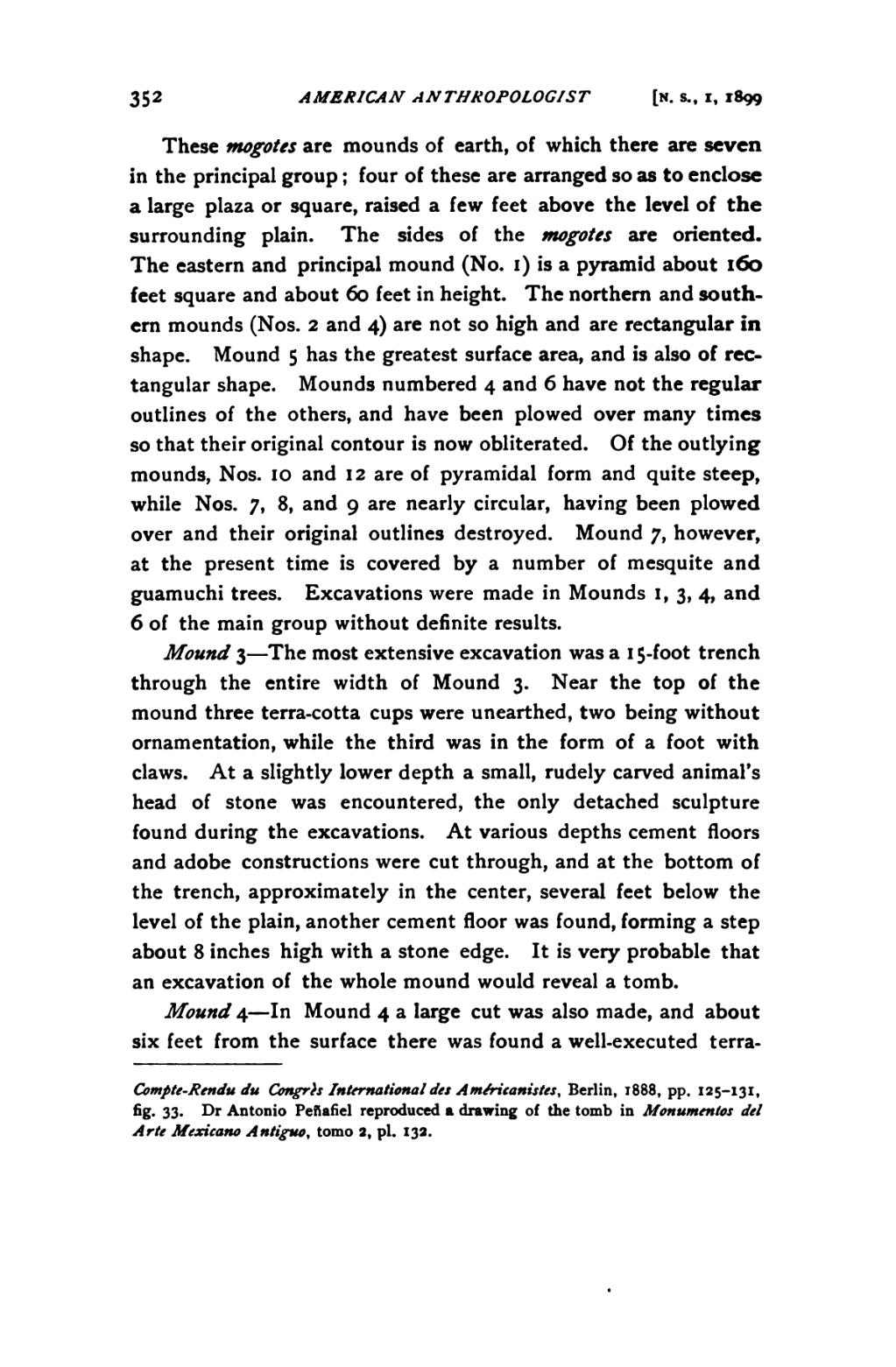352 AMERICAN ANTHROPOLOGIST [N. s., i, 1899
These mogotes are mounds of earth, of which there are seven in the principal group ; four of these are arranged so as to enclose a large plaza or square, raised a few feet above the level of the surrounding plain. The sides of the mogotes are oriented. The eastern and principal mound (No. 1) is a pyramid about 160 feet square and about 60 feet in height. The northern and south- ern mounds (Nos. 2 and 4) are not so high and are rectangular in shape. Mound 5 has the greatest surface area, and is also of rec- tangular shape. Mounds numbered 4 and 6 have not the regular outlines of the others, and have been plowed over many times so that their original contour is now obliterated. Of the outlying mounds, Nos. 10 and 12 are of pyramidal form and quite steep, while Nos. 7, 8, and 9 are nearly circular, having been plowed over and their original outlines destroyed. Mound 7, however, at the present time is covered by a number of mesquite and guamuchi trees. Excavations were made in Mounds 1, 3, 4, and 6 of the main group without definite results.
Mound 3 — The most extensive excavation was a 1 5-foot trench through the entire width of Mound 3. Near the top of the mound three terra-cotta cups were unearthed, two being without ornamentation, while the third was in the form of a foot with claws. At a slightly lower depth a small, rudely carved animal's head of stone was encountered, the only detached sculpture found during the excavations. At various depths cement floors and adobe constructions were cut through, and at the bottom of the trench, approximately in the center, several feet below the level of the plain, another cement floor was found, forming a step about 8 inches high with a stone edge. It is very probable that an excavation of the whole mound would reveal a tomb.
Mound 4 — In Mound 4 a large cut was also made, and about six feet from the surface there was found a well-executed terra-
��Compte-Rendu du Congrh International des Americanistes, Berlin, 1888, pp. 125-131, fig* 33* Dr Antonio Pefiafiel reproduced a drawing of the tomb in Monumentos del Arte Mexicano Antiguo % tomo 2, pi. 13a.
�� �
